- News
- Reviews
- Bikes
- Components
- Bar tape & grips
- Bottom brackets
- Brake & gear cables
- Brake & STI levers
- Brake pads & spares
- Brakes
- Cassettes & freewheels
- Chains
- Chainsets & chainrings
- Derailleurs - front
- Derailleurs - rear
- Forks
- Gear levers & shifters
- Groupsets
- Handlebars & extensions
- Headsets
- Hubs
- Inner tubes
- Pedals
- Quick releases & skewers
- Saddles
- Seatposts
- Stems
- Wheels
- Tyres
- Tubeless valves
- Accessories
- Accessories - misc
- Computer mounts
- Bags
- Bar ends
- Bike bags & cases
- Bottle cages
- Bottles
- Cameras
- Car racks
- Child seats
- Computers
- Glasses
- GPS units
- Helmets
- Lights - front
- Lights - rear
- Lights - sets
- Locks
- Mirrors
- Mudguards
- Racks
- Pumps & CO2 inflators
- Puncture kits
- Reflectives
- Smart watches
- Stands and racks
- Trailers
- Clothing
- Health, fitness and nutrition
- Tools and workshop
- Miscellaneous
- Buyers Guides
- Features
- Forum
- Recommends
- Podcast
review
£849.99
VERDICT:
The best Vector yet, and probably the best pedal power meter yet
Weight:
324g
Contact:
At road.cc every product is thoroughly tested for as long as it takes to get a proper insight into how well it works. Our reviewers are experienced cyclists that we trust to be objective. While we strive to ensure that opinions expressed are backed up by facts, reviews are by their nature an informed opinion, not a definitive verdict. We don't intentionally try to break anything (except locks) but we do try to look for weak points in any design. The overall score is not just an average of the other scores: it reflects both a product's function and value – with value determined by how a product compares with items of similar spec, quality, and price.
What the road.cc scores meanGood scores are more common than bad, because fortunately good products are more common than bad.
- Exceptional
- Excellent
- Very Good
- Good
- Quite good
- Average
- Not so good
- Poor
- Bad
- Appalling
The third time's the charm. Garmin has completely redesigned its Vector pedals, and the Vector 3 system is excellent. You get accurate power readings, they're even easier to swap between bikes, they look much neater and they're even a bit lighter. Add to that the fact that the price has dropped to £849.99 and they're an enticing proposition.
- Pros: Accurate power, easy to swap between bikes, good looking
- Cons: Still expensive (though not as expensive as before), battery compartment is fiddly
> Find your nearest dealer here
I reviewed Garmin's Vector 2 pedals on road.cc back in 2015, and they did very well indeed indeed. I've been running those Vector 2 pedals for the couple of years since that review. I've swapped the original Garmin bodies out for Shimano Ultegra ones (there was a kit for that), and I've swapped them between bikes any number of times – that's one of the key benefits of pedal-based power measurement.
Parting with the pod
The Vector 2 system's weak point was the transmitter pod, which plugged into the pedal and dealt with transmitting the data. It was an extra thing to remove and swap, and the connection was a bit fiddly, but most of all they were a bit prone to failure: I've had to buy at least two new ones, at £60 a pop.
So the main bit of good news is that the Vector 3 is an entirely new design, and it does away with the pod completely. All the electronics are contained within the new pedal body. Everything has been redesigned: the electronics are new, of course, but so is the pedal body, and the axle, and the bearings. There's really nothing left of the Vector 2.
The new body is much smoother than the rather angular Exustar body from the Vector 2, and I'd say these Vectors look the most like normal pedals of any power pedals. The only real giveaway is the end of the spindle: a black cover hides the LED status light which used to be on the pod. It blinks, as before, to let you know what's going on with the system. Putting the LED there means no fitting the Vector 3s with an Allen key, it's a standard 15mm pedal spanner job like before. You don't need a torque wrench, it's just a case of doing them up nice and tight like a normal pedal.
The new pedal body is again designed around a Look Kéo cleat and Garmin has upgraded the internal bearings to needle rollers from bronze bushings. They do feel very nicely put together and the improvement in build quality means the rider weight limit goes up to 105kg, even though they're a little bit lighter overall.
The previous Vectors ran from a 2032 coin cell battery in the pod and that gave them a claimed run-time of 150 hours. If, like me, you get your button cells eight for a quid in Ikea then you won't have troubled that kind of service interval, but the batteries were easy enough to change and readily available. There's no room in the sleek new pedal for a battery that big so instead they use tiny LR44 button cells, two in each side. They don't give quite as much run-time, a claimed 120 hours, but they're easy to swap, residing behind an end cap that you can undo with a 4mm Allen key. LR44 batteries are easy enough to get hold of on the cheap as well.
Changing the batteries is a slightly fraught operation: there's a delicate silicone O-ring you need to be a bit careful of, and the thread is fine so you need to make sure you don't cross it when you're screwing back in. Having said that, I've successfully changed the batteries out on the road, and there's a couple of spare O-rings in the box if you do manage to destroy one.
Dual band distinction
These pedals transmit on ANT+, so you'll be able to pair them up with your Garmin/Wahoo/[insert your GPS manufacturer here] head unit and get all your data. The pedals give you a power and cadence reading, of course, but there's a lot more than that available. They'll also give you a left-right balance, they'll tell you whereabouts on the pedal you're standing, they'll show you where you're putting power down in the pedal stroke, and they'll tell you how much time you spent seated and standing. All that info is available on Garmin's Connect web portal, though not all of it makes it over to third-party platforms such as Strava.
New for the Vector 3 is Bluetooth Smart connectivity. You don't get all the metrics that you get with ANT+, because the Bluetooth protocols don't support some of it. But it's easy to get power and cadence on Bluetooth devices, and that could be really useful in a couple of scenarios.
If you use your phone to log your rides then you can collect power data too, and if you're training indoors it could make your setup a lot simpler. If you're using Zwift or Trainerroad on an iPad, for example, it means you can feed the power directly into the app. Bluetooth connectivity also means you can update the firmware on the pedals through your smartphone, rather than having to use Garmin's dreadful desktop app and an ANT+ USB stick. So that's good.
Power to the people
Power-wise, we've found the previous two versions of the Vector to be on the money, and we weren't expecting any surprises with the Vector 3s. Here's what we found...
Power test 1: PowerTap G3 hub:
Our dependable PowerTap G3 hub is a unit we use for a lot of power meter comparisons. This is a 10-minute section from the middle of a loop around Berkshire. You can see that with the exception of a couple of anomalies the power traces are very close. Indeed, over the whole of the ride there was only a 2W difference between the two averages – 217W for the pedals and 215W for the hub – and you might expect the hub reading to be slightly lower due to losses in the transmission. The pickup of the pedals appears to be a bit quicker overall too.
Power test 2: Kickr V2, smart mode:
Benchmarked against the Kickr V2, recently calibrated, the pedals give a very similar output to the trainer. This graph is from an hour's group ride on Zwift, with some sprints and a mini-race at the end. The response is very similar, with the pedals reading slightly lower (about 1%) than the Kickr overall. On sprint efforts up to 1,000W there's very little difference between the peak readings, and there's very little discrepancy between the graph shapes throughout the ride.
Power test 3: Kickr V2, Erg mode:
This trace is from a road.cc group workout on Zwift, using the trainer in Erg mode (resistance adjusts to follow the intervals). It shows quite well that the power response of the Kickr in Erg mode isn't quite as stable as the line it generates might suggest, with the pedals showing the peaks that can occur as the power ramps up, and the troughs as the effort decreases. Here the pedals measured consistently over by around 3.5%, meaning that you might be working a bit harder than you think on those indoor workouts...
Garmin Connect: lots of data for the nerdy
If you want the full gamut of pedal data then the place to look at it is Garmin Connect, which does a great job of collating it. Here's a whole bunch of data from a 105km Bath CC chaingang ride.
Power first: you can see that it's pretty choppy. That's because this is a big group ride (groups of at least eight and sometimes more) and when you're sitting in you can coast quite a bit. You can see the main climb in the middle where it's more of a consistent effort, and I'm having to put out more constant power nearer the end because it's just me and Charlie heading home together.
Connect allows you to dig deeper into the power data too. Here you can see where I'm putting the power down in the pedal stroke, where my feet are sitting on the pedals, what my left/right balance is, and how much time I spend seated and standing. Garmin helpfully collates this information too:
So what can I learn from this? My maximum 20-minute power was 275W and I can put out 310W for 20 minutes if I'm really going for it, so it was a hard-but-not-too-hard kind of a day, which is how it felt. I slightly favoured my left leg (which I usually do), and my power phase was a bit longer on the left side too. My feet are slightly to the outside of the pedals – 2mm on the left and 3mm on the right – but I've got big feet and that seems to be about right for me. It doesn't feel natural if I move the cleats to compensate.
Anyway, there's lots of information. You can go into any of the individual graphs and look at what happens to your form as your fatigue increases, and you can take the headline stats and work on, say, concentrating on your right leg (in my case) to try to balance your pedal stroke more. If you're into crunching the numbers and making minor adjustments to try to maximise your performance, there's plenty to work with.
Worth the money?
The RRP of £849.99 is still a lot of money for a pair of pedals. It's worth bearing in mind, though, how much the price of power measurement has come down. The original Vectors were £1,349 a pair, so the third iteration has dropped a full £500 from the first retail price. It needed to as well, because the landscape has changed: Garmin doesn't have the place to itself any more.
Powertap's P1 pedals undercut the Vector 2s at £999, but they look a bit overpriced now compared to these and the Favero Assiomas, which are just £735 for double-sided pedal measurement.
> Buyer's Guide: How to choose a cycling power meter
So if you're after pedals that do power, the Garmins aren't the cheapest, but they're in the ball park. And of the three systems they're the ones that have been going the longest, and also the ones that produce the most data, with a very usable portal to mine it. And, in my opinion, they're the best looking, in that they just look like pedals.
The Vector has really come of age with this redesign. It's always been a good quality system with repeatable and accurate power measurement, but pretty much everything about the new pedals is an improvement.
Verdict
The best Vector yet, and probably the best pedal power meter yet
road.cc test report
Make and model: Garmin Vector 3 double sided power meter
Size tested: n/a
Tell us what the product is for
Garmin says:
Up your game
Ride stronger, smarter, connected with the Vector 3 pedal-based power meter. As you strive to beat your personal best on your next race or Gran Fondo, power is the most reliable way to gauge your performance on any given day, at any given time. Unlike other power meters, Vector 3 has the sensors housed right in the pedals, so it delivers reliable, accurate data on every training session.
Take it to the next level
With the Vector 3 dual-sensing system, you get the valuable ability to see right and left leg power independently. Vector 3 measures total power, cadence and left/right balance as well as advanced cycling dynamics, which help you tailor your training around your specific weaknesses and strengths to improve your form. It tracks seating/standing position to determine when and how long you were in each. So, you can gauge position effectiveness, power phase to show how you're currently producing power in a pedal stroke and platform centre offset to show where power is applied on the pedal so you can ensure proper cleat position. Each metric can be viewed on compatible Edge® cycling computers and Garmin Connect™ Mobile app.
Easy to install, transfer and use
With Vector 3, there are no complex drivetrain or wheel trade-offs and no external sensors to install. There are also no pods, so Vector 3 installs like any other pedal - and it's easy to transfer from one bike to another without bike shop assistance. Plus, its sleek design and improved stack height provide greater cornering clearance and smarter ergonomics, and its precision stainless-steel spindle and composite pedal body have been engineered and tested to withstand years of use. It offers battery life up to 120 hours.
Part of your connected bike
Get the most from your training by seamlessly pairing your Vector 3 with compatible Edge cycling computers, ANT+ or Bluetooth-enabled fitness devices1 - including compatible Forerunner ® and fenix ® devices - and Garmin Connect Mobile app. Plus, you can easily update software with any of these devices.
You can also integrate post-ride analysis, data sharing, mapping, route planning and more with Garmin Connect™, Strava and TrainingPeaks. And use ANT+ connectivity to get stronger by pairing Vector 3 with TrainerRoad. With the TrainerRoad app, you'll get personally scaled indoor workouts based on power from Vector 3. The indoor training system also has training plans that tell you exactly what to do to achieve your unique fitness and race goals. It's structured training in its most sophisticated and guided form.
Tell us some more about the technical aspects of the product?
From Garmin:
Installs like any other pedal and quickly transfers between bikes
Measures total power, left/right balance, cadence and cycling dynamics
Sleek design provides greater cornering clearance and improved stack height
Fully integrates with Garmin cycling ecosystem for data analysis
Allows for easy updates via compatible Edge® cycling computers, ANT+® connectivity or Bluetooth®-enabled fitness devices1 and Garmin Connect™ Mobile app
Battery life: up to 120 hours2
Rate the product for quality of construction:
9/10
Feel very nicely built, quality is an improvement on the V2.
Rate the product for performance:
10/10
Accurate, easy to fit, easy to use.
Rate the product for durability:
9/10
Pod was the weak point, and that's been addressed.
Rate the product for weight (if applicable)
9/10
Not a noticeable increase over a standard pedal.
Rate the product for value:
7/10
£850 isn't pocket money but you're getting a high quality system that's £500 less than it was a few years ago, and better to boot.
Tell us how the product performed overall when used for its designed purpose
Pretty much flawlessly.
Tell us what you particularly liked about the product
Well built, accurate power, easy to fit and swap.
Tell us what you particularly disliked about the product
Battery compartment a bit fiddly, battery life shorter than Vector 2.
Did you enjoy using the product? Yes
Would you consider buying the product? Yes
Would you recommend the product to a friend? Yes
Use this box to explain your overall score
The last pedals got 9/10. These are better, and they're cheaper, but the landscape has changed a bit with more competition and cheaper prices. Even so, they're hugely impressive.
About the tester
Age: 43
I usually ride: whatever I'm testing... My best bike is: Kinesis Tripster ATR, Kinesis Aithein
I've been riding for: Over 20 years I ride: Every day I would class myself as: Experienced
I regularly do the following types of riding: road racing, time trialling, cyclo-cross, commuting, club rides, sportives, general fitness riding, fixed/singlespeed, mountain biking, Mountain Bike Bog Snorkelling, track
Dave is a founding father of road.cc, having previously worked on Cycling Plus and What Mountain Bike magazines back in the day. He also writes about e-bikes for our sister publication ebiketips. He's won three mountain bike bog snorkelling World Championships, and races at the back of the third cats.
Latest Comments
- ErnieC 5 min 10 sec ago
Good man, well done!
- bluezurich 45 min 18 sec ago
I watched it all on Tiz for free with no ads.
- David9694 5 hours 56 min ago
+1 on saddle height and also check your lateral alignment - everything should be straight and aligned. My bike fit years ago moved my feet to the...
- froze 6 hours 18 sec ago
Everything Lezyne sells are really good, especially their pumps, and the Torque Drive. ...
- wtjs 6 hours 44 min ago
It's not only the UK which suffers from vile louts-VdP is a great athlete who deserves respect!
- Hirsute 7 hours 19 min ago
https://www.youtube.com/watch?v=wOzP87HVCWw
- Rendel Harris 8 hours 46 min ago
Apart from the fact that you're completely wrong - Decathlon is a French company and has 1045 stores in Europe compared to 50 in the UK - whilst...
- hawkinspeter 10 hours 51 min ago
Finally tried out the Smart Lever that I did get for Xmas as I had a suspicious looking bubble/bump on my rear GoodYear tyre (don't think I'll buy...
- pockstone 11 hours 17 min ago
Suitable reply, No Reply.
- chrisonabike 13 hours 54 min ago
Further motoring exemptions have been highlighted by a certain celebrity lawyer: needing the loo, being a well-known footballer...




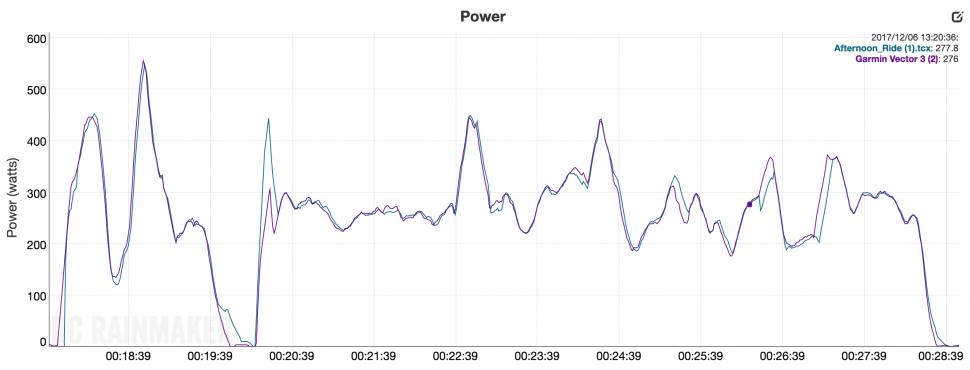
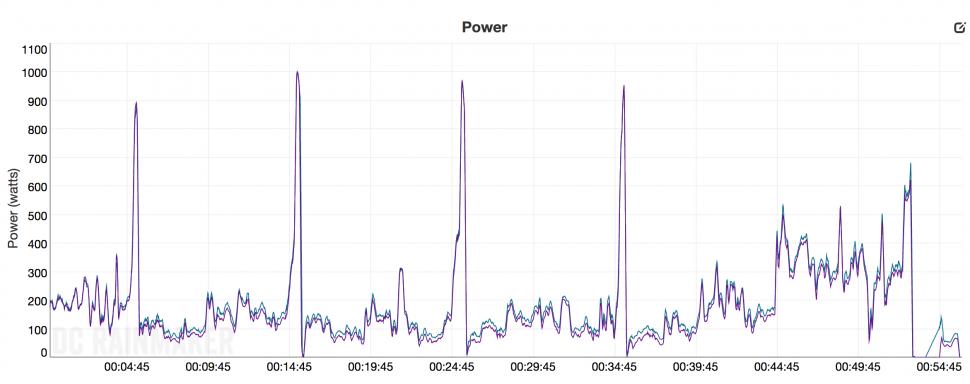


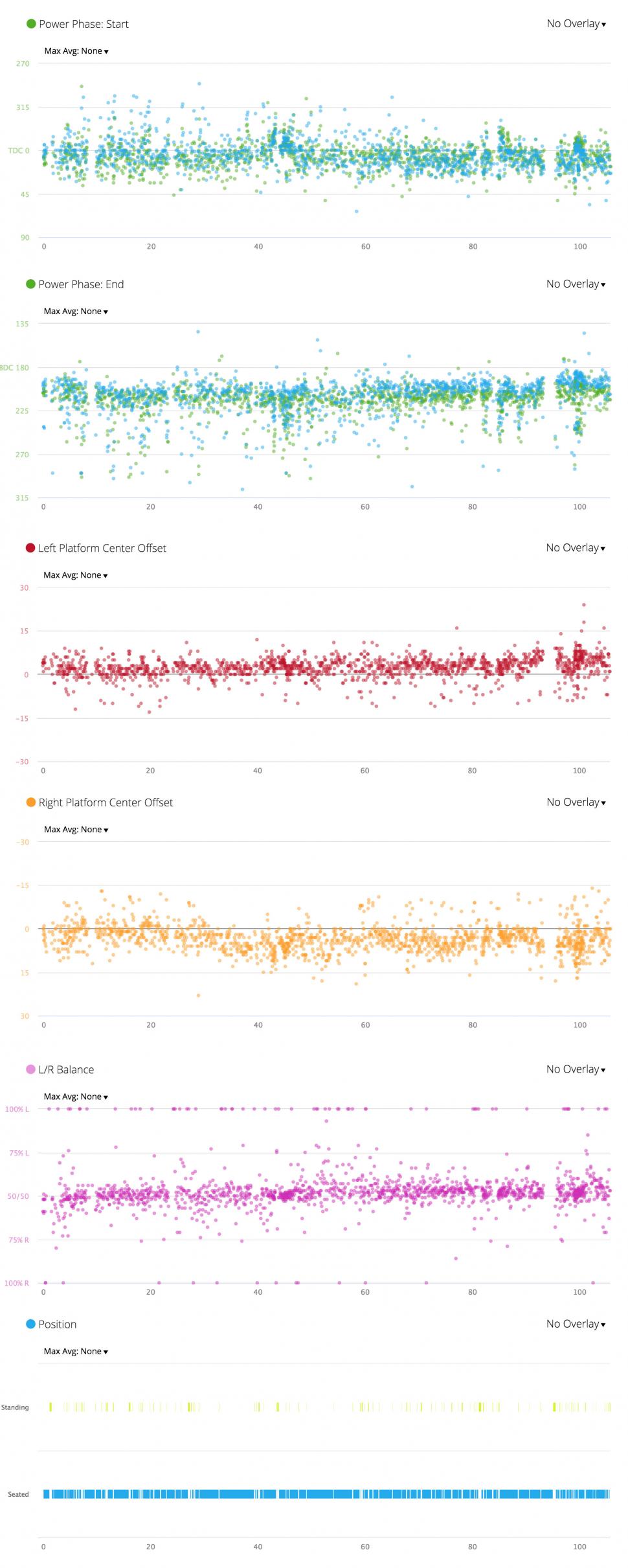
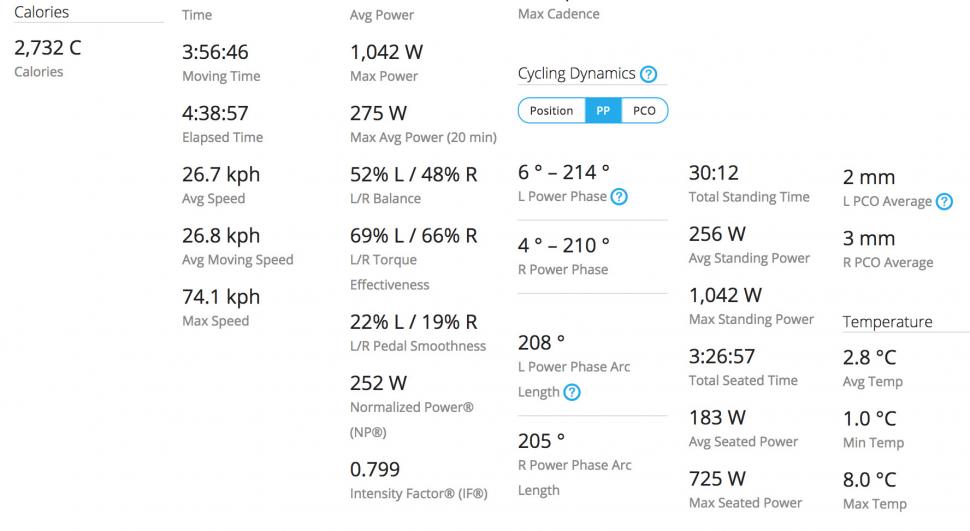
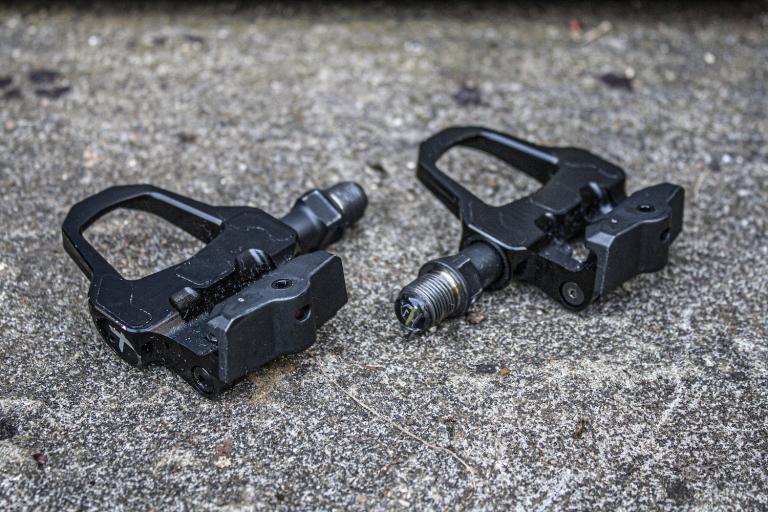
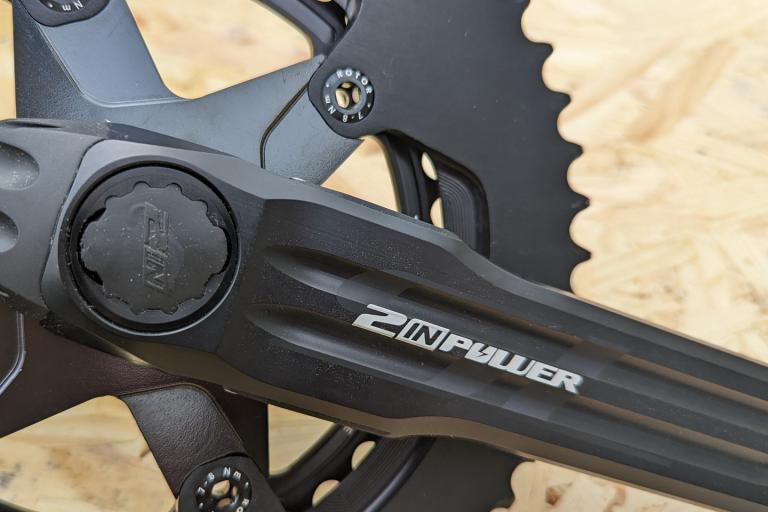


Add new comment
17 comments
I got single sided version back in December and after a couple of uses they stopped working, just showing very minimal power. Tried to trouble shoot with Garmin but could not address the problem so had to return to Evans Macclesfield who were great, but they needed to send them back to Madison to deal with Garmin .. 3 weeks later I am still no further forward, very frustrating, if it was going to take this long surely they should have just replaced. Spending this much I would have expected better customer service from Garmin. Very disappointed
Maybe the reviewer should correct the article.
Is incorrect at the present time because you don't get any metrics on Bluetooth. You could correct the grammar at the same time if you like
Sorry to hear you had to buy new Vector 2 pods. When I had a failure, Garmin replaced it free-of charge. I'm not getting anything like 150 hours out of them though, more like half that.
These new ones look quite neat.
With my V2 I get that easily in the summer but once the temp drops so does the battery performance - its a known issue with them.
At least with Garmin units you can change the battery (the P1's seem an even better option with the use of an AAA battery so more chance of finding them in a garage forecourt and perhaps less temperature sensitive)... with the Assioma Duo they are USB charge and from the review, 50 hours would be no good to me and charging them on the go would be a bit hard
Interesting to see the garmin beta testing using customers again, been through that with both Edge computers and V2, though the V2 is now quite stable so whilst I was going to buy the new V3 before Xmas, with the delay in being in stock I decided not to, so will live with what I have for a little longer.
I note the reviewer uses the Vector 2 with Ultegra bodies - I have the same combo. On mine the platform centre offset is alway over 10mm as a base reading on each side, try as I might to change the pressure or cleat position. I’d be interested to know if the reviewer has the same problem?
Garmin using end users as testers in my first observation. Again. Also, confused if these are BT now or not. Most suggest they are not but will be in the future following a firmware upgrade.
Thus struggling to understand why people wouldn’t seriously look at the Assioma Duo instead of the Garmins. Lighter, work with ANT+ and BT straight out of the box and available now (though they update their stock on a daily basis). Oh and they are cheaper too.
They are not currently Bluetooth compatable.
The lack of advertised bluetooth and buggy power drop issues I mentioned in an earlier post definitely has me wondering why I didn't learn the first time around with the Edge 820.
Although to Garmin's credit, the customer/warranty support has been excellent. After contacting them yesterday regarding these issues, they are shipping me a replacement set today.
I don’t own these, but I read something on the internet so I’m going to post on here anyway.
No, they don't transmit power data on BT yet. Garmin haven't released the firmware for that yet.
At the present time BT can only be used to connect them to Garmin Connect for firmware updates and configuration.
.... although you can use a Wahoo Ant+ adapter for iPhone/iPad or a CABLE (Ant+ to BLE) transmitter which also does the trick for Zwifting etc.
Not ideal though when you've lashed out all that money & either have to buy something else to get them to work with Zwift or wait for Garmin to get their act together.
Shane Miller wasn't happy that it says on the box they are BT compatible when they aren't (at present).
Wouldn't work with people who are running Bluetooth watches which aren't ANT+ compatible which rules them out for me
Get the 4iii HR strap which bridges between ANT+ and BT then you're good to go
True but my point is why should you?
If they are advertised as BT compatible straight away out of the box then they should be without you having to buy something else or wait for a firmware update.
Shane Miller on YT got a pair of these & out of the box they weren't Bluetooth compatible. He contacted Garmin & they said the firmware of the pedals was due to be updated. Not sure if that's happened yet though.
Worth bearing in mind for anyone wanting to use them on iOS with Zwift etc.
I'm hesitant to get these. The original Vector was a nightmare and the second generation was only slightly better. I am happy to see the death of the pods. Please be right or I might just find a corner in my man cave to assume the fetal position and cry for a bit. No pressure.
I've owned the Vector 3 pedals for the last three months, for the most part they are alright but they have not been without issues. Along with not being usable with Bluetooth, I've had issues with power drops outdoors and in Zwift. In Zwift, the power drops last 1-2 seconds, and have rendered a couple of races and group rides pointless after getting dropped from the group due to the frequent power drops. Yesterday on an outdoor ride, the pedals had several extended power drops (power completely stopped reading for minutes at a time), where I had to stop mid-ride to restart my wahoo, take out the power meter batteries, etc in an effort to troubeshoot the issue. Long story short, I spoke with Garmin support today and they are shipping me a new pair. Hopefully the second pair will be more reliable than the first!